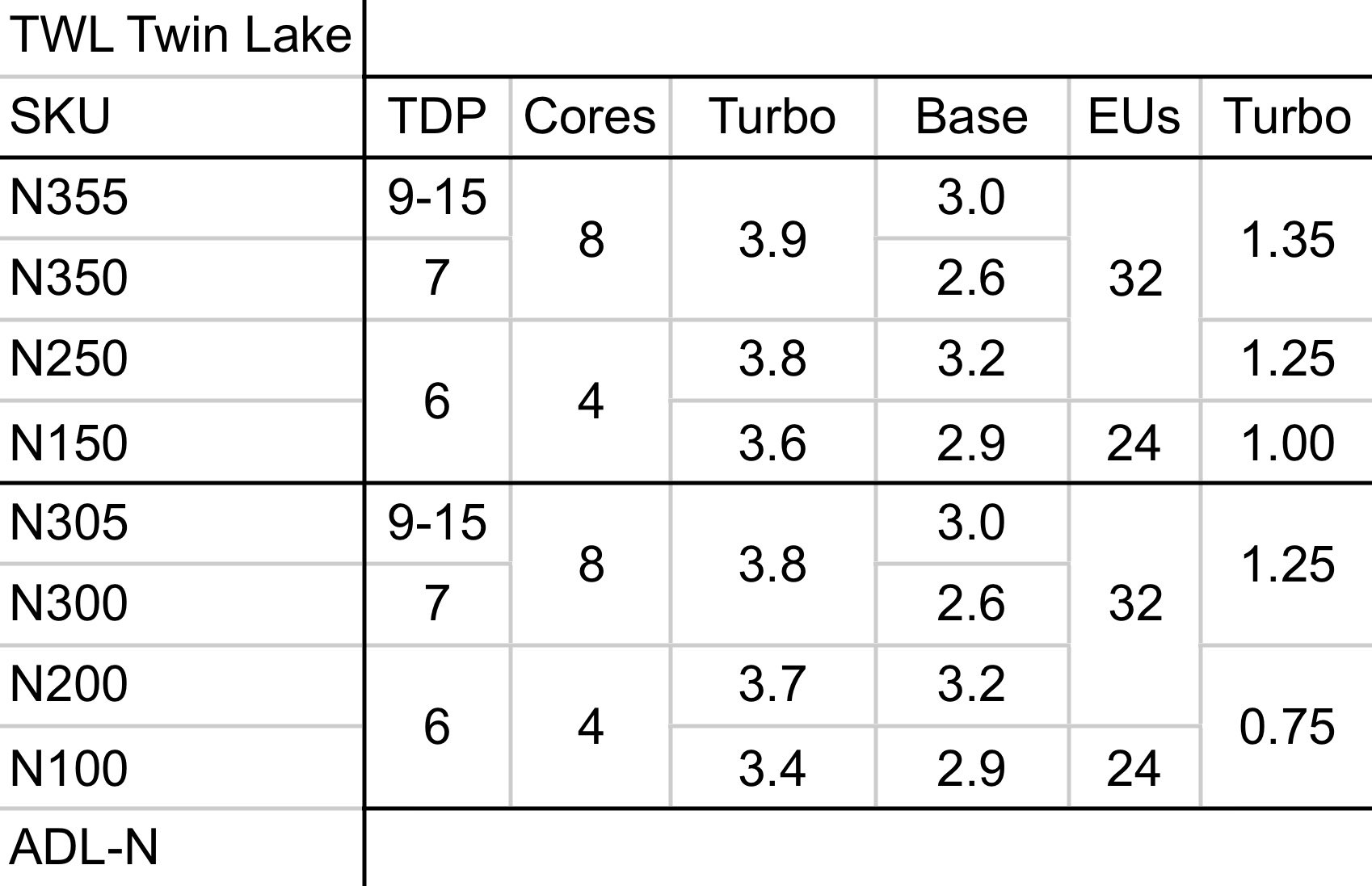
The beans appear to have been spilled regarding Intel's Twin Lake lineup of CPUs, via Jaykihn at X. These processors are expected to succeed the low-power Alder Lake-N series. After Intel abandoned its "Celeron" and "Pentium" brands, its sub-10W offerings for embedded systems and mini-PCs were stamped with the "Intel Processor" tag. The new Twin Lake processors are, reportedly, still based on Alder Lake silicon with minor clock speed improvements across the board.
This practice of refreshing older architectures and selling them in parallel with current-gen offerings isn't new. Intel launched the Core 100 lineup side by side with Meteor Lake, featuring Alder Lake dies. Likewise, leaks allege that a new Core 200 lineup is in the works, also based on the now three-year-old Alder Lake architecture. As for N-series processors, tight margins probably prevent Intel from porting its latest Skymont and Lion Cove cores into these CPUs. Just to chip in, rumor has it that a new Wildcat Lake family could serve as a proper next-gen replacement for Alder Lake-N and Twin Lake processors.
Twin Lake (Shorthand: TWL) reportedly offers four SKUs, in an all-E-core configuration, likely developed using the Gracemont architecture. Akin to their predecessors, these processors feature TDPs ranging from 6W up to 15W. Intel removed the "Core" moniker from select chips to distinguish them from its remaining product stack. CPUs lacking the "Core" branding have superseded Pentium and Celeron offerings with a few updated features. However, a few N-series processors with elevated TDPs and higher core counts are still badged with the term "Core". To elaborate, Intel's N-series CPUs are further divided into "Core N-series" and "Processor N-series".
First up we have Twin Lake's flagship, the N355, with eight cores and eight threads, offering a turbo frequency of 3.9 GHz, up from 3.8 GHz versus its predecessor with a configurable TDP between 9W and 15W. The N350 is no different than the N355 apart from the base clock and TDP, now limited to just 7W. The N250 and N150 follow along, rated at 6W each, limited to a single E-core cluster (four cores) with a massive (up to) 66% higher turbo frequency than their last-gen counterparts.

The leaker explicitly states that Intel will not entertain any RMAs should these CPUs exceed their listed TDP ranges (6/7W for NXX0 SKUs and 9/15W for N3X5 SKUs). N-series processors aren't designed for gaming and productivity workloads but exist to serve lightweight laptops, embedded systems, NAS devices, home theaters, you name it. We expect more TWL details directly from Intel at CES next month.







